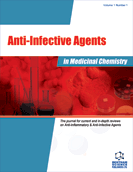Abstract
Legionella spp have been identified in many series as responsible for a variable percentage of communityacquired pneumonia (CAP) and for some outbreaks of hospital-acquired pneumonia (HAP). In many geographic areas Legionella ranks second to pneumococcus on the list of causes of severe CAP (SCAP). Therapeutic approach remains an important goal since the case-fatality rate is 5% to 30%, with elderly and immunocompromised patients at greatest risk of death. Clinicians should be aware of either dual or mixed infections and extrapulmonary localizations of Legionella since mortality may increase if these features continue unrecognized. Optimal therapy against Legionella infection is based on agents with high intrinsic activity, an appropriate pharmacokinetic and pharmacodynamic profile, including the ability to penetrate phagocytic cells, results of clinical studies, a low incidence of adverse reactions and an advantageous costefficacy relationship. Macrolides and fluoroquinolones are the first-line therapy. Azithromycin and clarithromycin present a better pharmacokinetic profile than erythromycin. The more recent fluoroquinolones, such as gemifloxacin or moxifloxacin generally show a better intrinsic activity than the older ones but the clinical relevance of that data is unclear since most patients with Legionnaires disease show a positive outcome when an early administration of any effective anti- Legionella agent is indicated. Doxycycline also demonstrates a good intrinsic activity against Legionella. Recently marketed or under investigation anti-Legionella agents are ketolides (telithromycin or cethromycin), new fluorquinolones (garenoxacin, olamufloxacin, ABT-492, DW 286a), glycyclynes (tygecycline) and everninomycins (ziracin). Although these new therapeutic agents might be effective in treating pneumonia caused by Legionella, clinical experience of them is still quite limited. Combined therapy of rifampicin with macrolides or quinolones is still a controversial issue.
Keywords: Legionnaires' disease, treatment update, new drugs
 4
4





















